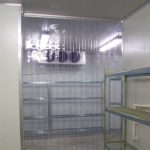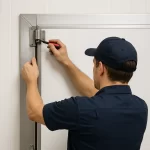Common Causes of Temperature Malfunctions in Freezers and Coolrooms
- 23 June 2016
Given that freezers and coolrooms are built to exacting engineering standards, they rarely break down. The sealed chambers maintain a uniform chill around the clock, a level of determined functionality that relies on a high-quality mechanical and electrical design. Unfortunately, even a brief interruption during a lengthy cooling cycle can compromise stored content, which, basically, is why temperature malfunctions cannot be tolerated. Let’s look at the common reasons for such glitches so that we can add them to a predictive maintenance program.
Basic Electrical Problems
If the temperature is on the rise, troubleshoot the electrical system. A quick look at the thermostat readout would tell us the power is there, for example, so the issue could lay elsewhere, perhaps in the refrigeration gear. Freezers and coolrooms are major energy users, so high-output electrical circuitry is needed in order to power energy-hungry compressors. Check for blown fuses and tripped circuit breakers. If a short circuit is suspected, the circuit breaker may not reset, which means it’s time to call in an expert repair service.
Refrigeration Unit Failure
A cooling unit is a complex assembly of mechanical and chemical subsystems, parts that are wrapped in controlling electrical and electronic circuitry. Icy build-up is an issue here, a problem that causes heat transfer imbalance. The evaporator coils stop working and a safety relay trips. Overpressure switches and thermal contacts protect the equipment, but someone has to clear out the ice and reset these switches before the system can be returned to its normal operating cycle.
Optimizing Freezers and Coolrooms to Work Problem-Free
Many of these issues are unavoidable, but some can be entirely prevented. Distribute the food and beverages, pharmaceutical products and chemicals evenly. An open layout encourages optimized airflow. Next, don’t overfill the chamber. An overfull freezer stresses the cooling unit and causes the compressor to run hot. This overload scenario also occurs when coolroom insulating panels are loose or missing. Finally, check the seal around the door and listen to the motor, for a constantly operating motor may indicate a coolant leak. These leaks reduce the power of the equipment. In essence, the cooling appliance can no longer obey the thermostat because of the leak.
Coolroom technology is now so compact, so modular and reliable, that it rarely fails. Still, in keeping these crucial storage areas safe, absolute functionality is a must, which is why a sound troubleshooting strategy and a timely maintenance plan must incorporate common malfunction causes and their solutions.
Mark Connelly
C&M Coolroom Services
E-mail : markconnelly@cmcoolrooms.com.au
Mobile: 0412 536 315


